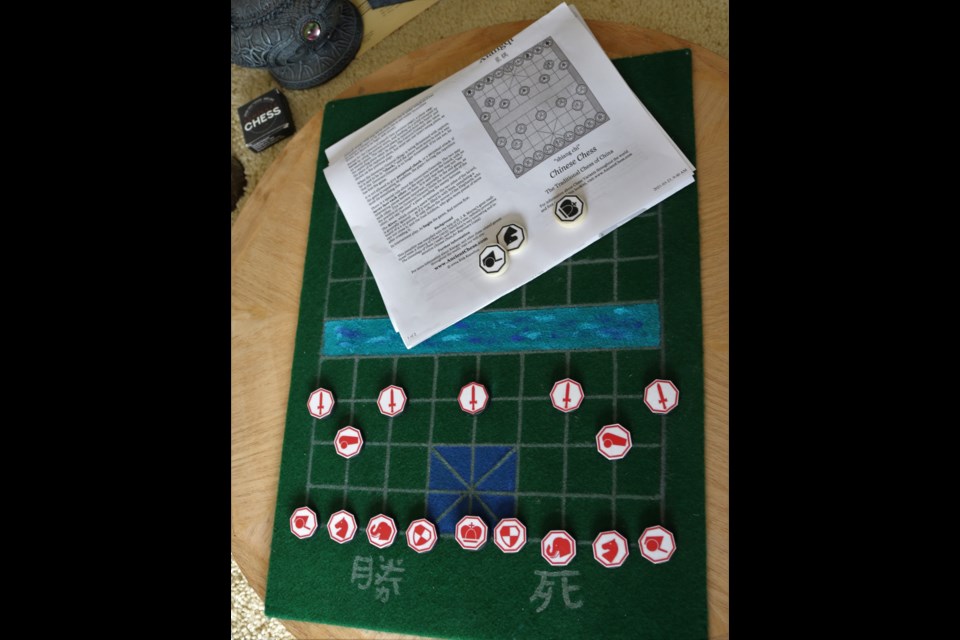For the past two weeks this column has delved rather deeply into the classic game of Xiangqi thanks largely to the cooperation of Jim Png the man behind www.xqinenglish.com, and his willingness to talk about the game.
So again for those completely unfamiliar with Xiangqi, simple starter sets are available on ebay.ca for under $20 from China, since shipping is still reasonable from there.
However, set pieces are typically checker-like and Chinese ‘letters’ and used to differentiate the pieces. Learning the symbols on the pieces can frankly be far more difficult than learning the movement of pieces that are, in some cases different from western chess.
Years ago this writer ordered one of the wooden sets – they remind very much of crokinole disks in terms of shape and size.
They are quite nice, and highly functional, and for a few dollars you get a set of pieces that should last – well forever with some care.
Alas, the board that comes with low cost sets are ridiculous thin board lines -- which are quite different given the river down the middle, and the castles where the generals reside – on plastic that is basically the same stuff as a grocery bag.
The board had to go, so I used my rather limited art skills, painted a board on some green felt, and then mounted it on a board. It turned out quite well actually, although since it doesn’t fold, it does not store as easily as most chess boards do.
With a better board it was a greater joy to try Xiangqi, but I will admit the symbols on the pieces were rather difficult to differentiate for my ‘western’ eyes.
I found some rather poor graphics online, printed them, and glued on the underside of the pieces. The art was lousy, and so using that side seemed to detract from the game experience, but so do did having to pick up pieces often to peek under to see what it was in a fashion my English mind could better understand.
Years have passed since then, and Xiangqi remains a game of interest, but limited play experience.
But a few weeks ago I did find some nicer ‘english’ graphics of the pieces, and given a bit of free time amid winter and pandemic keeping me housebound, I decided to create a better set.
I grabbed the ‘stones’ from a backgammon set – I like buying sets for just this sort of purpose – and went to work.
A careful cut-out of the art, was then attached to the stones with a glue stick. Then came a couple of applications of decoupage on top.
Finally, I spray applied some clear coat – note if you do this and pieces still feel a touch sticky, put into a bit of talcum powder and it tends to stop the stickiness without being noticeable once dusted off.
The overall result is a rather nice looking Xiangqi set which purists will argue isn’t a true set without the traditional graphics, but is easier to understand for me. It means pieces are easily identifiable so I can focus on the best moves, rather than having to try to identify the pieces.
And, there was the fun of creating the pieces, and back in the day, the board too. Both were relaxing exercises, that were a good diversion still associated with the hobby of board gaming.



